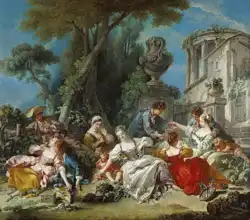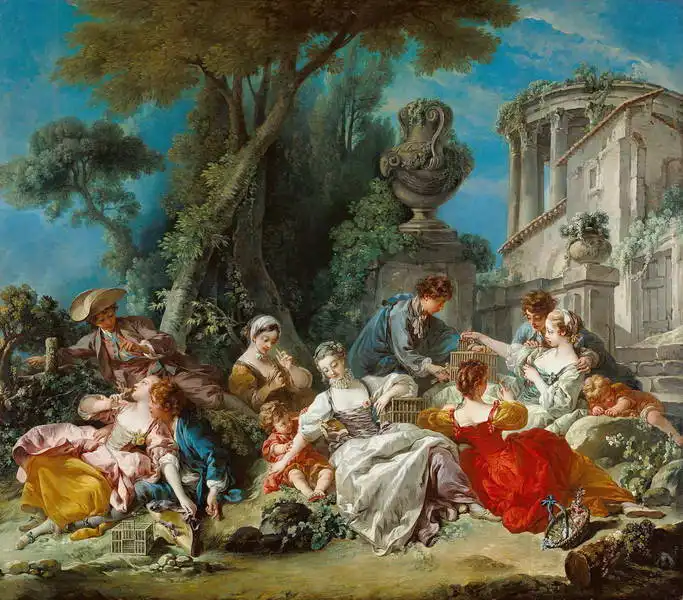About this finishing
Print. The image is printed on the top quality 10-ink HP Z9PS printer on HP matte 270 g / m2 paper. You can choose any size to an accuracy of 1 cm. A margin of 5 cm around the image is added to the size of the motif.


You can find a detailed description about our finishings
here.
Catching bird
Date:
1748The painting depicts a group of elegantly dressed people in a rural setting. Men and women are resting among trees and architectural ruins. Some of the figures are sitting on the ground while others are standing. There is a relaxed, sociable atmosphere, some playing musical instruments, others chatting or leaning against trees. The clothing suggests the Rococo or early Classical period, and the overall layout and style of the painting suggests that it is the work of a European master.
This description was created by artificial intelligence, please be indulgent.
Boucher painted picture Catching bird in 1748. Prevailing color of this fine art print is vivid and its shape is landscape. This image is printed on demand - you can choose material, size and finishing.
François Boucher (1703-1770). He was a French painter and one of the main representatives of the Rococo style. He also worked as a court portraitist of Madame de Pompadour. Further, he was an excellent draftsman, and his way of drawing is reminiscent of
Rubens and
Watteau. According to some sources, Boucher created over 10,000 drawings and a wealth of images. The tapestry manufactory of Beauvais plays an important role in his own work. Boucher’s other work includes various topics, such as portraits, historical and mythological paintings and pastoral scenes, among others. His choice of colour is subtle, motifs are very sensual and in portraits, Boucher focuses primarily on the elegant pose of the model, not psychology. With these capabilities, Boucher was considered one of the best painters of his time. However, already during his life, critics pointed to his affectation and artificiality. One of the much-trumpeted critics, Denis Diderot, accused Boucher of painting women as prostitutes and placating the tastes of the nobility. Diderot’s criticism caused the public to condemn, rather than admire, Boucher by the end of his life.


